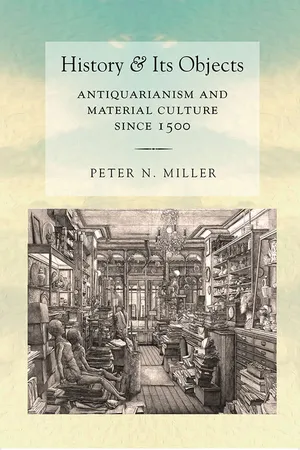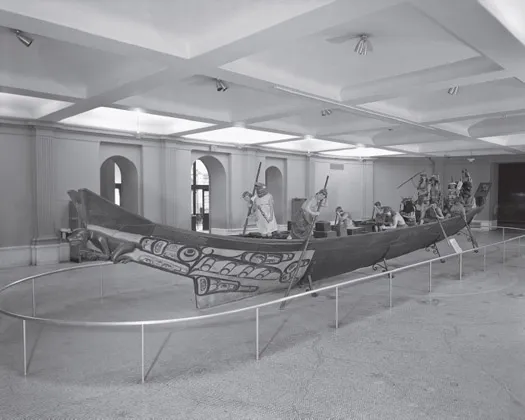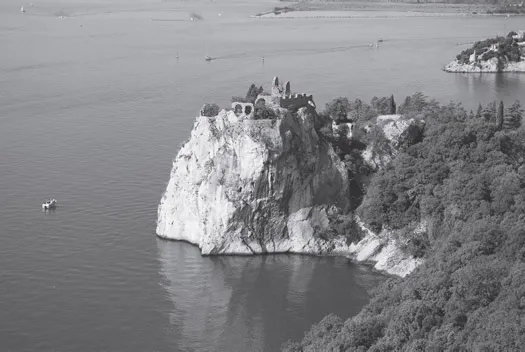Chapter 1
History and Things in the Twentieth Century
From my childhood trips to the Hayden Planetarium at the American Museum of Natural History I remember two things: the giant, metal, ant-shaped Zeiss Mark IV projector in the planetarium and the Northwest Coast canoe crewed by wooden Indians perpetually paddling out the 77th Street entrance. The one impressed as space-age wizardry, the other with a primitiveness that belied its artifice. One was a piece of technical rationality put in the service of the imagination, the other a piece of re-imagining—where did that crew come from, anyway?—that was somehow supposed to inspire rigorous scientific investigation.
No one has written more knowingly nor more lovingly about the canoe as an object than Bronisław Malinowski (1884–1942). Marooned on Papua New Guinea during the First World War while doing fieldwork, the product of his prolonged residency was one of the most perfect books of the twentieth century—and an astonishing engagement with material culture. The chapter Malinowski devoted to the canoe in Argonauts of the Western Pacific (1922) surveys its meanings from 360 degrees, and in so doing models all the questions anyone might have about any kind of artifact. Acknowledging that a canoe “is an item of material culture,” and therefore can be described, photographed, and collected, “the ethnographic reality of the canoe,” he writes, “would not be brought much nearer to a student at home, even by placing a perfect specimen right before him.” For even though it was material, the canoe’s meaning was derived from its role in society and in the individual imagination. Nevertheless, as Nietzsche himself might have believed, Malinowski explained that “it is in this emotional attitude of the natives towards their canoes” that researchers would find the “deepest” reality, the “innermost self.”
Figure 3 The native canoe at the 77th Street entrance of the American Museum of Natural History. Image #328834, American Museum of Natural History Library.
That same year, Rilke completed the Duino Elegies. The ten poems represent—among other things, certainly—the working out of a metaphysics of objects. Read this way, they may be the culmination of a series of reflections that began in Rilke’s earlier work on Rodin. Rilke encountered Auguste Rodin in 1902 and soon after became his secretary. He looked very carefully at Rodin’s work and saw not concepts or ideas but hands. “Hands,” he wrote, “are a complicated organism, a delta in which much life from distant sources flows together and is poured into the great stream of action.” For him, hands are real, and what they make is real. In fact, what they make is history. “Hands have a history of their own, they have, indeed, their own culture.”1
Rilke’s “culture of the hand” is a way of defining human activity: training the hand, the works of the hand, the world made by many hands. But then Rilke tried to imagine what a historical practice would look like that took this world as its subject. “If my subject were personalities,” Rilke began, “I could begin where you have just left off on entering this room; breaking in upon your conversation, I would, without effort, share your thoughts.”2 This is the ideal of history as it actually was, Ranke’s famous wie es eigentlich gewesen ist. It is the Historismus upon which was founded the university-based discipline of history. But it is not the history Rilke wants to write or might want us to write. “When I attempt to visualize my task,” he continues, “it becomes clear to me that it is not people about whom I have to speak, but things.”3
Rilke probes deeply. “How does it come about at all that things are related to us? What is their history?” Rilke’s answer meets the depth of his challenge. He offers up a conjectural history of the creative soul that would seem to follow Nietzsche’s turn to “historical philosophy” in Human, All Too Human. Things, he writes, were made very early, with difficulty, after the pattern of natural things already existing. “The earliest images were possibly nothing but practical applications of this experience, attempts to form out of the visible human and animal world something immortal and permanent, belonging to an order immediately above that world: a thing.”4
By 1907, then, Rilke had developed an ontology that linked humans and things. Building on this, he sketched out a model of what a historical study fit for this approach might look like. He also hinted at a possible metaphysics, too, in which things explained not only the place of humans in this world, but also our relationship to things eternal. This project may owe something to Nietzsche’s vision of artifacts in Human, All Too Human as residually auratic because of their original investiture with divine potency. Rilke zeroed in on that divine residue and gave it voice in the Duino Elegies, begun in 1912 and then completed, on the other side of the cataclysm, in 1923. The first six elegies are devoted to the various obstacles to connecting the material and the transcendent aspects of existence, while the final four make it the centerpiece of Rilke’s quest for healing.
From a generalized affirmation of the world, warts and all, Rilke began, in the seventh elegy, the process of connecting in the realm of ruins with the antiquarian’s work of reconstruction: “Where once an enduring house was, now a phantom structure crosses our path, completely belonging to the realm of concepts.”5 The things themselves were gone, but they had been reconstructed and preserved as mental realities. Temples that once existed, he writes, were no longer known: “It is we who secretly save up these extravagances of the heart. Where one of them still survives, a Thing that was formerly prayed to, worshipped, knelt before—just as it is, it passes into the invisible world.”
This is indeed the fate of all material things. But, Rilke argues, the recovery and reconceptualization of these monuments within us, through imagination, is an even greater triumph. “Many no longer perceive it, yet miss the chance to build it inside themselves now, with pillars and statues: greater!” Objects and monuments even in their decayed, ruinous state functioned still as internalized placeholders of materiality. “This once stood among mankind, in the midst of Fate the annihilator, in the midst of Not-Knowing-Whither, it stood as if enduring.”6 Those who had no ability to take the ruin inside he calls the “disinherited ones, to whom neither the past belongs, nor yet what has nearly arrived.” Moving from inner to outer, from psychology to archaeology, Rilke recapitulates the history of antiquarianism as metaphysical assertion. To the angels, Rilke speaks the monuments of Western culture: “Pillars, pylons, the Sphinx, the striving thrust of the cathedral.”7 And yet, Rilke is also instructing the instructor, as poet to the historian, that reconstructing the past is an act of imagination, not just archival skills, and that this act is itself encoded in the encounter with the thing as the paradigmatic “source.”
Figure 4 Duino Castle and Cliff.
But then, in the ninth elegy, Rilke takes the interest in reconstructing the past in a direction it hadn’t gone to before, or at least not as archaeology. For he argues that things give us not so much the grand monuments of the past but the monumentality of the ordinary. In other words, the same ontology connects the study of the material past to the study of daily life—a connection that the Annales School and the Yidisher Visnshaftlekher Institut (YIVO) made that same decade, though in different languages. “Why then have to be human?” he asks. “Because truly being here is so much,” is his answer. Trying to “hold it firmly in our simple hands” was the goal, but what could ever be taken into the realm beyond, of the angels? The answer, he writes, was not something “unsayable” or transcendent for us humans, like a sphinx or pillar or cathedral. All this would be obvious to the angels. Instead, evoking a Nietzschean descent from the mountaintop, Rilke’s envoy brings “some word he has gained, some pure word, the yellow and blue gentian,” referring to a common flowering, alpine plant. Unlike Aby Warburg, then, who worried about how he would get from the “heights of Sils-Maria to the lowlands of the scholar’s study,” Rilke trusted in that connection. Flowers, simple in their own way, could yet be staked against the eternal. And this, in turn, led Rilke into an extraordinary sequence of lines in which it is material culture that is pledged in the game of meaningfulness. “Perhaps we are here,” he writes, “in order to say: house, bridge, fountain, gate, pitcher, fruit-tree, window—at most: column, tower.”8
Rilke’s choices are not random. These are not merely common objects, they each define a point on the map of human existence and taken together map the significant contours of life itself. The “house” stands for family and human society; the “bridge” for what connects people and stories; the “fountain” is the life-giving power of nature; the “gate” marks thresholds and regulates crossings; the “pitcher” is the man-made instrument for bringing sustenance from nature to bodies; the “fruit-tree” is both product of the elements and nourishment for people; the “window” how we, and through which we, see the world. The “at most” suggests that the typical art-historical objects only occupy one end, the obvious end, of a much richer spectrum.
It is of this daily realm that Rilke sings: “Praise this world to the angel.” He insists that we focus on the here and the now and that things mediate this encounter. In some of his most arresting mix of registers and images he writes:
… So show him [the angel]
something simple which, formed over generations,
lives as our own, near our hand and within our gaze.
Tell him of Things. He will stand astonished; as you stood
by the rope-maker in Rome or the potter along the Nile.9
Rilke’s metaphysics of objects was laid out by 1923. It remains a unique perspective on why things matter. And, as far as I know, it has played no role in subsequent discussions of material culture.
In that same year, at the sanatorium in Kreuzlingen, Aby Warburg delivered his now-famous lecture on the Hopi snake dance. Warburg had traveled in the American Southwest in 1897 and delivered a few lectures upon his return to Germany at ethnological museums in Hamburg and Berlin. He had even thought of gaining his Habilitation with a dissertation on the Hopi.10 But the material had otherwise remained in the drawer until, as part of an effort to demonstrate a wellness sufficient to warrant his discharge from care, Warburg pulled it all together for a bravura presentation. And still the lecture remained unpublished. After his death, and the Kulturwissenschaftliche Bibliothek Warburg’s flight to London, a small summary was published in English. But the full text did not reappear until the end of the twentieth century, first in German and then in English.11
The reader of “Images from the Region of the Pueblo Indians of North America” encounters not just photographs and drawings of objects, both sacred and profane, but also a discussion that turns around space and things. At the center, of course, is the snake—a particular kind of object—and the snake’s home and the human performance of the snake. We are half a world away, and more, from Malinowski’s canoe, but the laser-like penetration through layers of the material, all the way to the innermost immaterialities, is the same. Warburg not only photographed things like the native kachina dolls, he had himself photographed wearing the god-doll. Warburg’s library, which he described as a “Problem-Bibliothek”—we might call it a “problem-focused collection”—functioned as a magnet for historians and anthropologists of religion. His own work crossed borders between disciplines, materials, and institutions in pursuit of its intellectual quarry. Warburg, was, for instance, interested in clothing, hairstyles, jewelry, pots, wall-coverings, furniture, and the like, all without regard for the object’s status or aesthetics. For the purpose of understanding
the decoration of a marriage chest could be just as relevant as the fresco cycles of a palace, a temporary structure erected for a pageant as revealing as a cathedral; popular broadsheets, ballads, customs, rituals, amulets, games, anything and everything that formed par...


